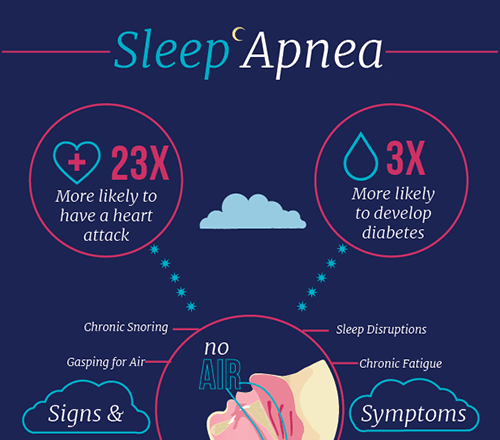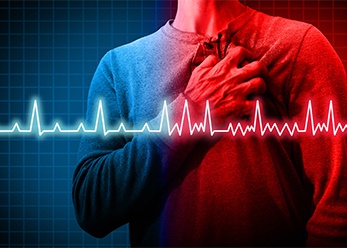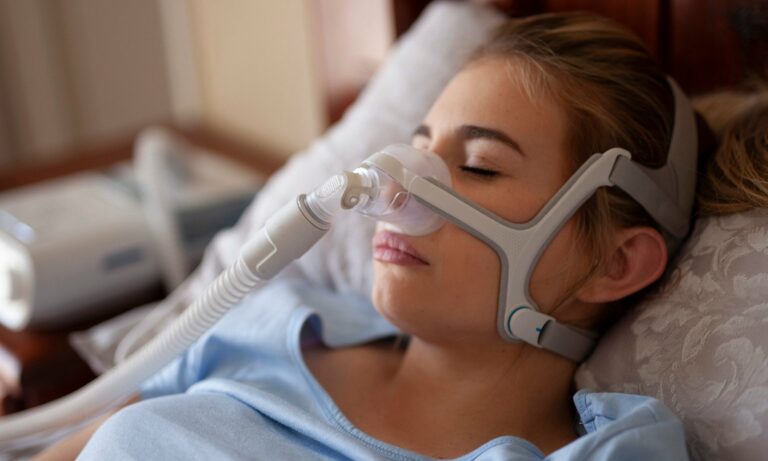Bradycardia: Slow heart rate
Author: Rose Stella
Rose Stella
Category: Health
Tags: health, heart, electrical, bradycardia
Bradycardia is a heart rate that is slower than normal. Adults’ hearts typically beat between 60 and 100 times per minute while they are at rest. Your heart beats less than 60 times per minute if you have bradycardia.
In addition, this is a dangerous condition that occurs when the heartbeat is abnormally slow and the heart is unable to pump enough oxygen-rich blood to the body. If this occurs, you may have dizziness, extreme fatigue or weakness, and shortness of breath. Occasionally, bradycardia is without symptoms or problems.
A slowed heartbeat is not always caused for alarm. For instance, a resting heart rate of 40-60 beats per minute is relatively common during sleep and in some individuals, notably healthy young adults and trained athletes.
If the bradycardia is severe, an implantable pacemaker may be required to assist the heart in maintaining a normal beat.
Heart Fundamentals
Electrical signals move through the heart’s four chambers: the two atria on top and the two ventricles below. These signals cause the heart to beat in a regular rhythm. However, pulses do not always fire properly.
This results in what is known as arrhythmias, or irregular heartbeats.
Also, certain situations induce the heart to race or flutter. In the case of bradycardia, the opposite is true. The electrical issue lengthens the time interval between heartbeats.
You could simply have a slower-than-normal heart rate that is symptom-free. Electrical activity may be functioning normally, albeit slightly slower than it is in the majority of people. You would not be diagnosed with this disorder at all.
And, even if you do have bradycardia, you may never have symptoms or require therapy. However, this is not always the case.
 Difference between a normal heartbeat and Br
adycardia
Difference between a normal heartbeat and Br
adycardia
What are the signs of bradycardia?
You may not have any signs of bradycardia. But if you do have a sluggish heart rate and any of these symptoms, call your doctor:
- Syncope/passing out
- Dizziness
- Weakness
- Confusion
- Heart palpitations/fluttering
- Feeling short of breath
- Chest pain
- Lack of energy
- Causes of bradycardia
Possible Causes of Bradycardia:
- An issue with your SA node (sick sinus syndrome) (sick sinus syndrome)
- A problem with your AV node or any of the electrical channels through the heart (heart block) (heart block)
- Illness or medical problems such as:
- Injury to the heart due to heart attack, endocarditis or a medical treatment
- Inflammation of the cardiac muscle
- Low thyroid function
- Electrolyte imbalance in the blood
- Sleep apnea
- Congenital heart defect
- Valvular heart disease
- Lyme illness
- Certain drugs, including beta-blockers and cardiac rhythm meds
Causing Factors and Risk Factors
Bradycardia is caused by a malfunction in the electrical system of the heart, which regulates the heart rate. This interruption can be attributed to four distinct causes:
Sinoatrial node dysfunction – the sinoatrial node, also known as the sinus node, is the heart’s natural pacemaker. This collection of cells stimulates the heart with electrical impulses, causing it to contract. When this node malfunctions, it might generate much slower electrical impulses, causing the heart to beat more slowly.
 Sinoatrial node dysfunction
Sinoatrial node dysfunction
Conduction pathways that are dysfunctional – electrical impulses pass through conduction channels in the heart. When these circuits do not function properly, the heartbeat slows - a condition known as an atrioventricular block or heart block, which can take one of three forms:
First degree – all electrical signals from the atria are sent to the ventricles, albeit at a slower rate than typical.
Second degree – just a portion of the atria’s electrical signals reach the ventricles. When a signal is not received by the ventricles, the heartbeat intended by the signal is not triggered.
Third-degree – no electrical impulses reach the ventricles from the atria. When this occurs, a natural pacemaker located in the ventricles may step in to regulate the heartbeat, but at a slower rate than typical.
**Additional risk factors for a breakdown of the electrical impulses
linked with bradycardia include the following:**
- Cardiomyopathy congenital
- Heart tissue infection
- Cardiovascular surgery
- Hypothyroidism or another type of metabolic disorder
- Heart attack or heart disease-related damage
- Blood electrolyte imbalance
- Sleep apnea obstructive
- Diseases characterized by inflammation (rheumatic fever or lupus)
- Several drugs
Bradycardia can occur in people of all ages, genders, and ethnic backgrounds. However, older individuals, as well as those with the following risk factors, are at elevated risk:
- Hypertension (hypertension)
- Smoking
- Excessive alcohol consumption
- Recreational drug use
- Stress or anxiety on the psychological level
Prevention
Certain drugs, particularly when taken in large doses, might cause bradycardia, hence it is critical to take all medications as prescribed. While bradycardia is not usually preventive, health care experts prescribe steps for lowering the risk of developing heart disease. Take the following steps to maintain a healthy heart:
- Maintain a regular exercise regimen.
- Consume a balanced diet. Choose a low-fat, low-salt, low-sugar diet rich in fruits, vegetables, and whole grains as your diet.
- Keep a healthy weight.
- Maintain healthy blood pressure and cholesterol levels.
- Avoid smoking.
- Consume alcohol in moderation. If you choose to consume alcohol, do so sparingly. This equates to up to one drink per day for women and up to two drinks per day for males. If you are unable to control your alcohol consumption, speak with a health care practitioner about a program to help you stop drinking and manage other alcohol-related behaviors.
- Control your tension. Intense emotions can have an effect on the heart rate. Several strategies for relieving stress include regular exercise, joining a support group, and experimenting with relaxation techniques such as yoga.
- Proceed to planned examinations. Conduct routine physical examinations and notify your health care provider of any indications or symptoms.
- Keep an eye on and treat pre-existing heart problems
-
If you currently have heart problems, you can take steps to reduce your risk of developing bradycardia or another type of irregular heart rhythm:
-
Adhere to the strategy.

Bradycardia can be difficult for doctors to diagnose because it is not always present. Your heart can alternate between slow and fast rhythms.
Treatment
The treatment for this condition depends on the most likely cause of the disease. For instance, if hypothyroidism, or poor thyroid function, is the underlying cause, addressing it may resolve the heart rate issue.
If there is no obvious physical cause, your doctor may adjust any medications that are causing your heart to slow. Beta-blockers are occasionally prescribed to help the heart muscle relax. However, if they produce an abnormally slow heart rate, your doctor may reduce the dosage or prescribe an alternative medication.
If none of these techniques work and your illness is severe enough to jeopardize your brain and other vital organs, you may require a pacemaker.
In addition, the surgeon will implant the little device into your chest. It is made up of thin, flexible wires called leads, it can extend all the way to the heart. They carry modest electrical charges that assist in maintaining a regular rate of heartbeat.
If you have been prescribed a pacemaker, carefully follow your doctor’s instructions regarding how it works and any warning signals that it may not be working p.













